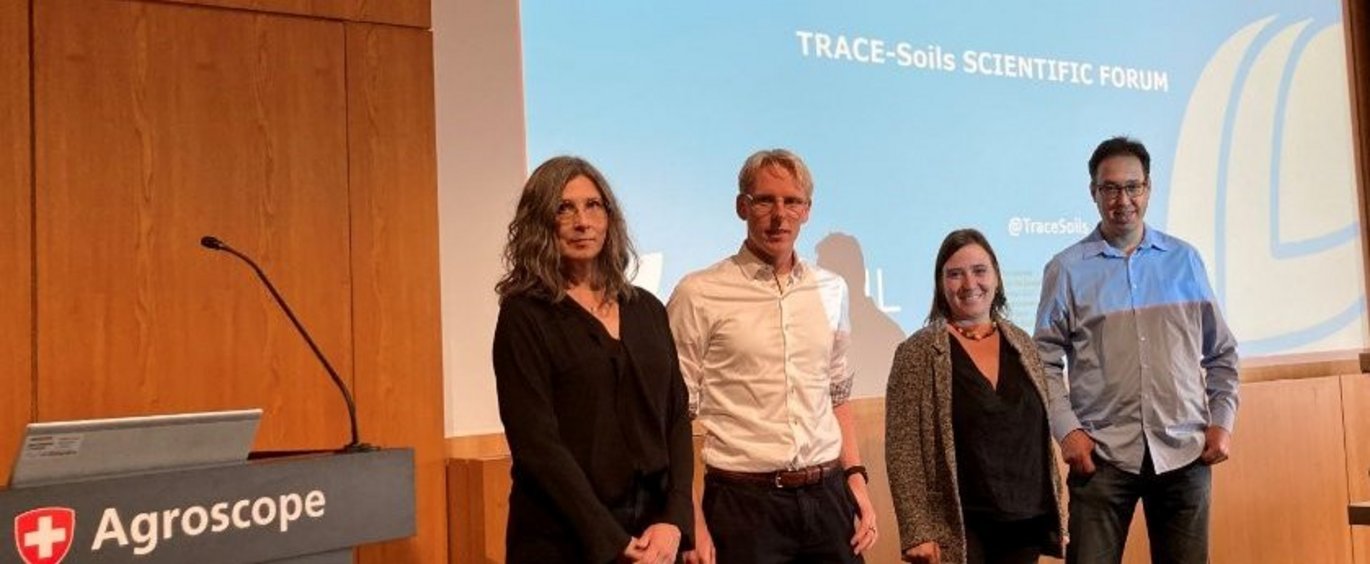TRACE-Soils literature review at mid-term meeting in Switzerland
In October, members of the TRACE-Soils consortium gathered in Zürich, Switzerland for both a scientific forum and the halfway meeting of the project. An extensive literature review on the relationship between C sequestration, nutrient losses and soil characteristics was presented at the meeting - as well as the first results of a measuring campaign in seven long-term tillage experiments.

The EJP Soil project TRACE-Soils aims to assess carbon sequestration measures for potential trade-offs with greenhouse gas emissions and nutrient losses, as well as identify indicators for these trade-offs.
In October, members of the project consortium gathered in Zürich, Switzerland for the halfway meeting of the project, where progress and results were shared and discussed
One of the highlights was the presentation of an extensive literature review on the relationship between C sequestration, nutrient losses, and soil characteristics, which has been made as part of the project.
Additionally, the first results of a measuring campaign in seven long-term tillage experiments across Europe were on the agenda. These results will be further analysed and communicated to the scientific community in the second half of the project.
Scientific forum on sustainable agriculture
The project meeting was preceded by a scientific forum on sustainable agriculture to support soil function and biodiversity, where four speakers shared their experiences with around 100 people, who had joined in person or online.
Mart Ros from Wageningen Environmental Research (WUR) presented the results of an experiment on the effect of renovation practices in grassland systems and their effect on CO2 and N2O emissions.
- Both eddy-covariance and chamber measurements revealed that ploughing of grassland led to an increase in CO2 and N2O emissions over a growing season. Moreover, CO2 fluxes were higher after conversion of grassland to arable land than after reseeding the grassland, he says.
Click here to watch Mart Ros briefly explain essentials from his work.
Click here to watch Marcel van der Heijden briefly explain essentials from his work.
Sara Hallin of the Swedish University of Agricultural sciences (SLU) discussed the role of soil microbes that determine the importance of various nitrogen loss pathways in agricultural systems, and Sara Sánchez-Moreno of the Spanish National Institute for Agricultural Innovation (INIA-CSIC) presented her work on soil nematode communities and how they function under various environmental conditions, including drought stress.
Click here to watch Sara Hallin briefly explain essentials from her work.
Click here to watch Sara Sánchez-Moreno explain essentials from her work.
The forum was concluded by the host, Marcel van der Heijden, from Agroscope and the University of Zürich, who talked about approaches to use the soil microbiome, e.g. mycorrhizal fungi, to increase the sustainability of agriculture.
Further information
You can read more about the TRACE-Soil project on the project website here
Video interviews from Switzerland are available here: ...
If you have any further questions about the TRACE-Soil project or the halfway meeting, please contact Cristina Aponte on cristina.aponte@inia.es